Generally, wooden garage doors offer little insulation to adjacent spaces. Without proper thermal protection, objects in the garage can be susceptible to damage from the cold. So how can you insulate a wooden garage door? We researched the steps for this process and here’s what we found.
Start the wooden garage door insulating project by wearing protective clothing and equipment. After finishing the proper arrangements, follow these steps:
- Cut each foam board needed to size.
- Apply foam adhesive at the back of each board.
- Attach the insulation boards onto the panels on the wooden garage door.
- Repeat the previous steps as many times as needed.
Properties in regions experiencing frequent cold weather should insulate their wooden garage doors. Continue reading to learn more about why this is important. We’ll also talk about the process to insulate a wooden garage door properly in greater detail.

Do Wooden Garage Doors Need Insulation?
Homeowners can take advantage of different benefits upon insulating their wooden garage doors. Reduced energy bills and increased safety for the items in the garage are among these gains.
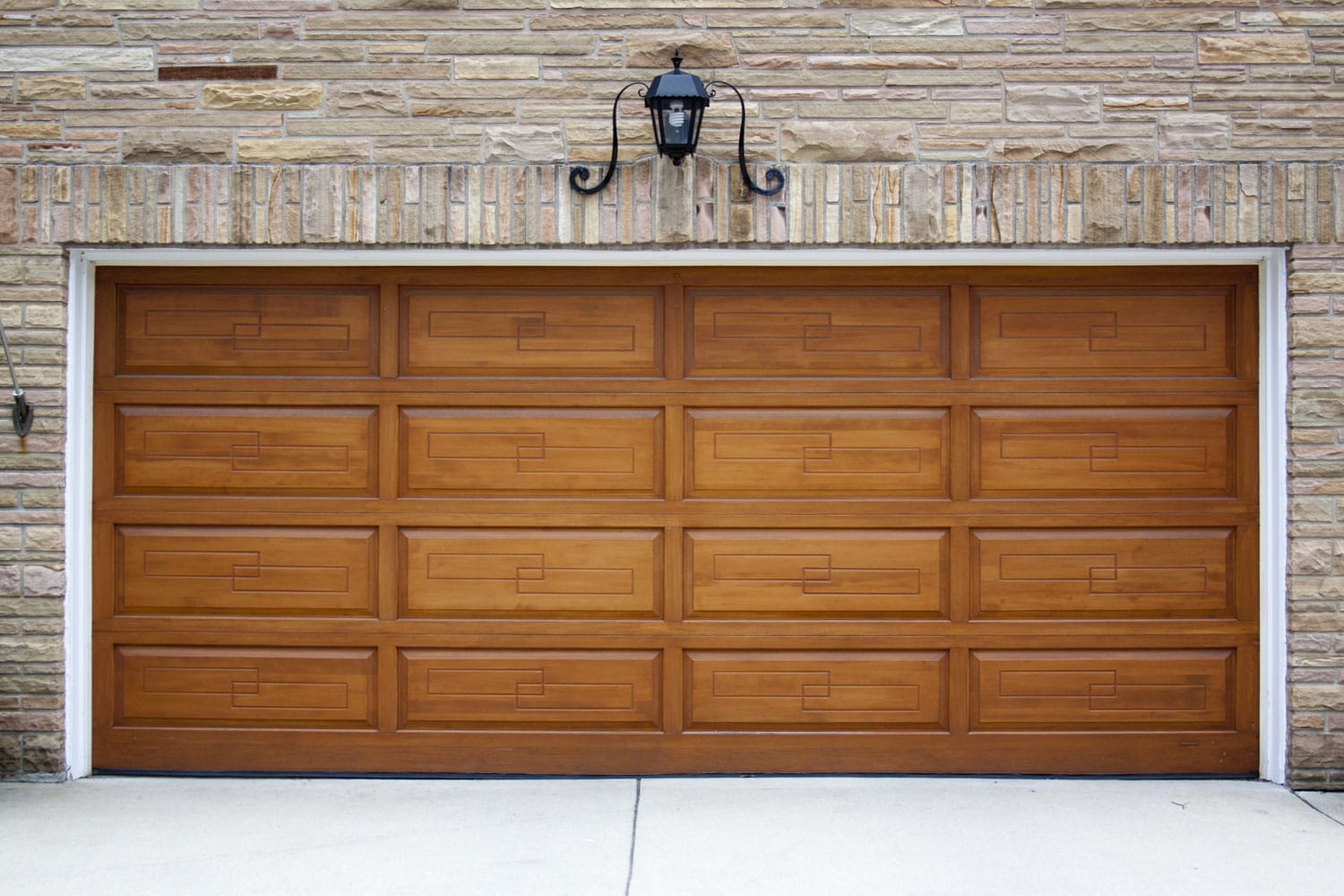
Certain insulation options may also help reduce noise coming from within garages. In turn, it allows DIY enthusiasts to work in peace without the risk of disturbing their neighbors while working on their projects in these spaces.
How Do You Insulate An Old Wooden Garage Door?
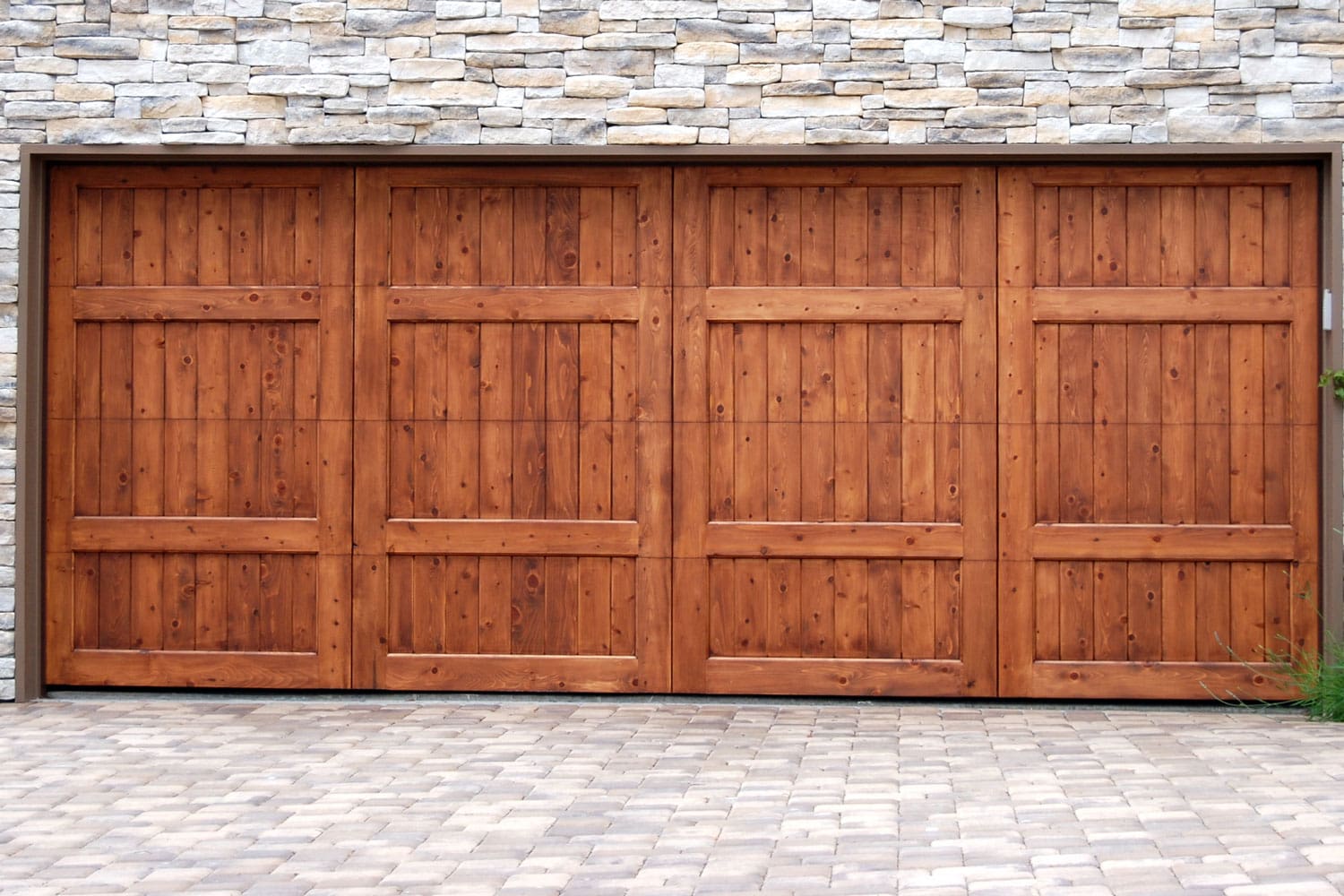
Before attempting any insulation installation job, make sure to exercise proper safety precautions. The Insulation Institute recommends abiding by the following measures to ensure safety during and after the job:
- Wear suitable clothing. Comfortable, long-sleeved pieces of clothing are the ideal things to wear to help prevent irritation while working with insulation.
- Put on protective gear. Wearing a headcover and a respirator can help avert possible respiratory problems.
- Use compressed air. If working with fiberglass insulation, compressed air can help remove the fibers from clothing and skin. Don’t rub or scratch these particulates or you’ll risk digging them deeper than their current state.
- Keep the area ventilated. Open other doors and windows in the area to avoid dust and other dirty particulates from staying within the space.
Also, make sure to clean the garage door before installing the insulation. Use a brush and a vacuum cleaner to remove loose dirt, dust, and debris from the door. Otherwise, leaving filth attached to this surface can hinder the thermal resistance provided by the insulation.
Additionally, repair any cracks or gaps on the garage door. Splinters may also pierce through the foam insulation, which can reduce the material’s shielding against significant temperatures.
After finishing the necessary preparations, you can proceed with the installation job by following these steps:
What You’ll Need
- Foam board insulation
- Utility knife
- Tape measure
- Foam adhesive
- Rubber mallet
Step-by-Step Guide
- Measure each panel on the wooden garage door and use the measurements to cut the foam boards to size with the help of the utility knife.
- Draw an ‘X’ mark at the back of each foam insulation panel with the adhesive.
- Place cut insulation boards into each panel. Use the rubber mallet and apply sufficient pounding pressure to the materials for them to fit snuggly.
- Repeat steps 2 and 3 for the rest of the wooden garage door panels.
Check out this insulating foam board on Amazon.
Keep in mind that the steps to insulate a wooden garage door may differ depending on its design. For example, some garage doors can have larger-than-average panels that might require more insulation material than usual.
So take the time in assessing the difficulty of this project before going through with it, which will allow you to arrive at proper results.
You can also watch the video below to learn more about this process:
Additionally, you can read our guide on how to insulate roll-up garage doors if you find it interesting to learn about that process.
What Is The R-Value Of A Wood Garage Door?
A wood garage door usually has an R-value of approximately 2.17. Garage doors that use plywood can even have R-values as low as 0.62.
Keep in mind that different locations require varying R-values. However, the lowest R-value in many states is R13, making bare wooden garage doors unideal for locales experiencing frequent cold weather.
How Do You Insulate A Garage Door Without Panels?
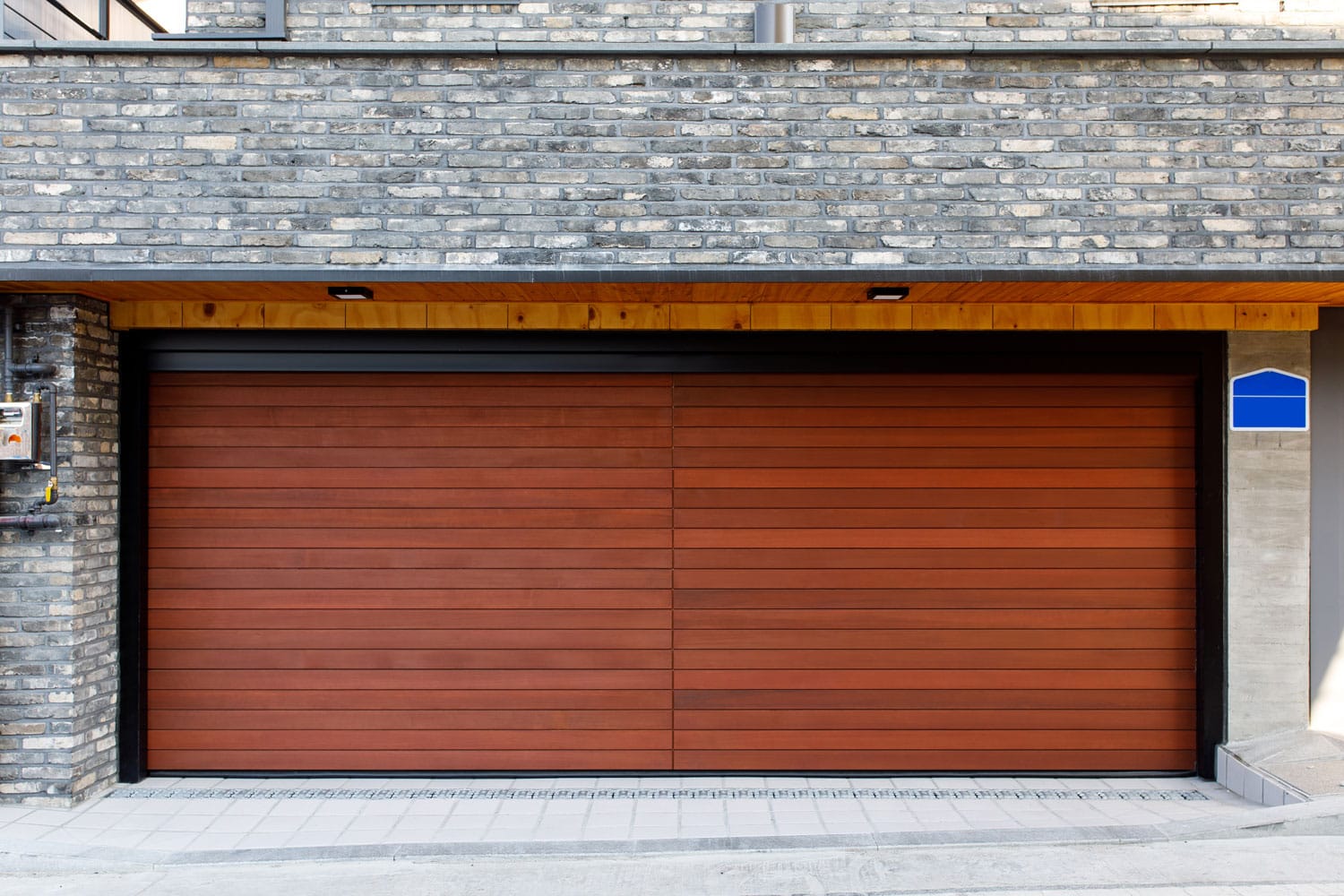
Insulating a wooden garage door without panels has roughly the same process as installing insulation material on a doorway with panels. Perhaps the main difference is the size of the foam boards to use.
Since the garage door doesn’t have panels, use foam insulation boards with sizes that best fit the setup. If you can’t find boards that are big enough for the door, you can connect multiple pieces to insulate the surface properly.
Check out this 2.5-square foot foam insulation on Amazon.
How Do I Know If My Garage Door Is Insulated?
Garage doors with built-in insulation may come with white Styrofoam between silver bars. Another way to check if a garage door has insulation is to check its design. Some models may come with fairly thick material that might provide a certain degree of thermal resistance to the connected space.
How Do I Increase The R-Value On My Garage Door?
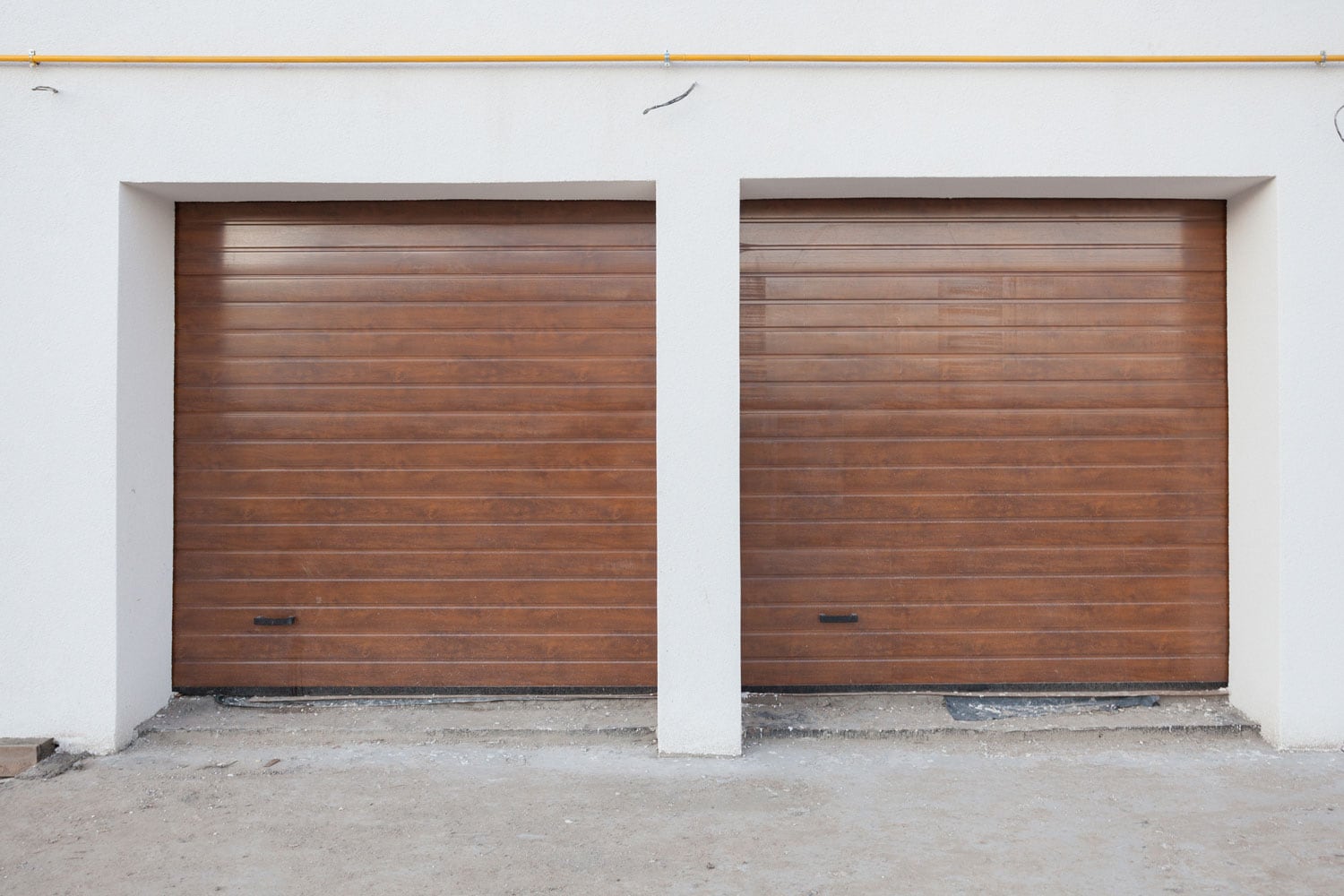
Different options exist to help homeowners increase the R-values on their garage doors. In general, most options on the market for adding thermal resistance to garage doors are foam boards. However, buyers can choose between two types of foam insulation boards to help increase these doors’ R-values.
Polystyrene
Also called expanded polystyrene (EPS), foam boards using this material are usually a staple choice for many homeowners, thanks to its simplicity of installation. EPS foam boards are also generally less expensive than their polyurethane counterparts.
Interested buyers can choose among the different EPS boards with varying thicknesses and R-values that often range from R2 to R10.
Check out this polystyrene insulating foam board on Amazon.
Polyurethane
Aside from providing insulation to garage doors, polyurethane foam is a versatile material with other uses. For instance, it can be used as kitchen sponges, medical dressings, and for the creation of detailed sculptures.
Plus, polyurethane foam has R-values ranging from R10 to R17.5, making it an excellent choice for places experiencing colder weather than others. On the downside, this type of insulating foam can be more expensive than polystyrene options.
Check out this polyurethane foam block on Amazon.
How Much Does It Cost To Insulate A Garage Door?
Homeowners should prepare to spend about $200 to insulate their garage doors using fairly inexpensive materials. Keep in mind that the costs may vary based on the amount and quality of the equipment needed for the job.
Another option is to purchase a new insulated garage door. However, the cost for this choice is generally higher than choosing a DIY solution. Some garage doors with built-in insulation and their estimated price ranges are:
- Single-layer steel: $500 to $1,200
- Double-layer steel: $800 to $1,800
- Triple-layer steel: over $1,000
The overhead can also increase if interested customers also want to avail of professional insulation installation services. If so, the costs for the expert labor are generally within the $0.75 to $1.00 per square foot range.
How Do You Insulate A Finished Garage?
Aside from insulating the garage door, installing insulation in a finished garage can help enhance the space’s protection against serious weather. It’s possible to finish this project without destroying the walls.
For this operation, you’ll use the ‘Drill and Fill’ technique. In other words, you’ll drill holes into your walls in strategic locations, which you’ll fill with blown-in insulation afterward.
But before you start this task, use a stud finder to ensure you won’t drill into the garage’s posts. Mark the areas with a pencil where there are no studs so you can drill through the wall without risking harm to the space’s structure.
After drilling the holes, proceed with the rest of this operation by following these steps:
What You’ll Need
- Cellulose insulation blower
- Blown-in cellulose insulation
- Lumber
- Drywall joint compound
- Drywall knife
Step-by-Step Guide
- Use the blower to blow the cellulose insulation into the drilled holes. Stop blowing the insulating material when you see some excess pouring out of the hole.
- Cover the holes with appropriately-sized lumber.
- Screw the lumber into place.
- Cover the holes with drywall.
- Apply drywall joint compound over the covered walls. Use a drywall knife to spread the product around the area.
- Let the joint compound dry and cure before painting it with the color that matches the rest of the wall.
You can also watch the video below to see the steps mentioned above in action:
Also, don't forget to read our post on garage ceiling insulation to know the importance of this thermal-resisting solution.
Check out this blown-in cellulose insulation on Amazon.
Final Words
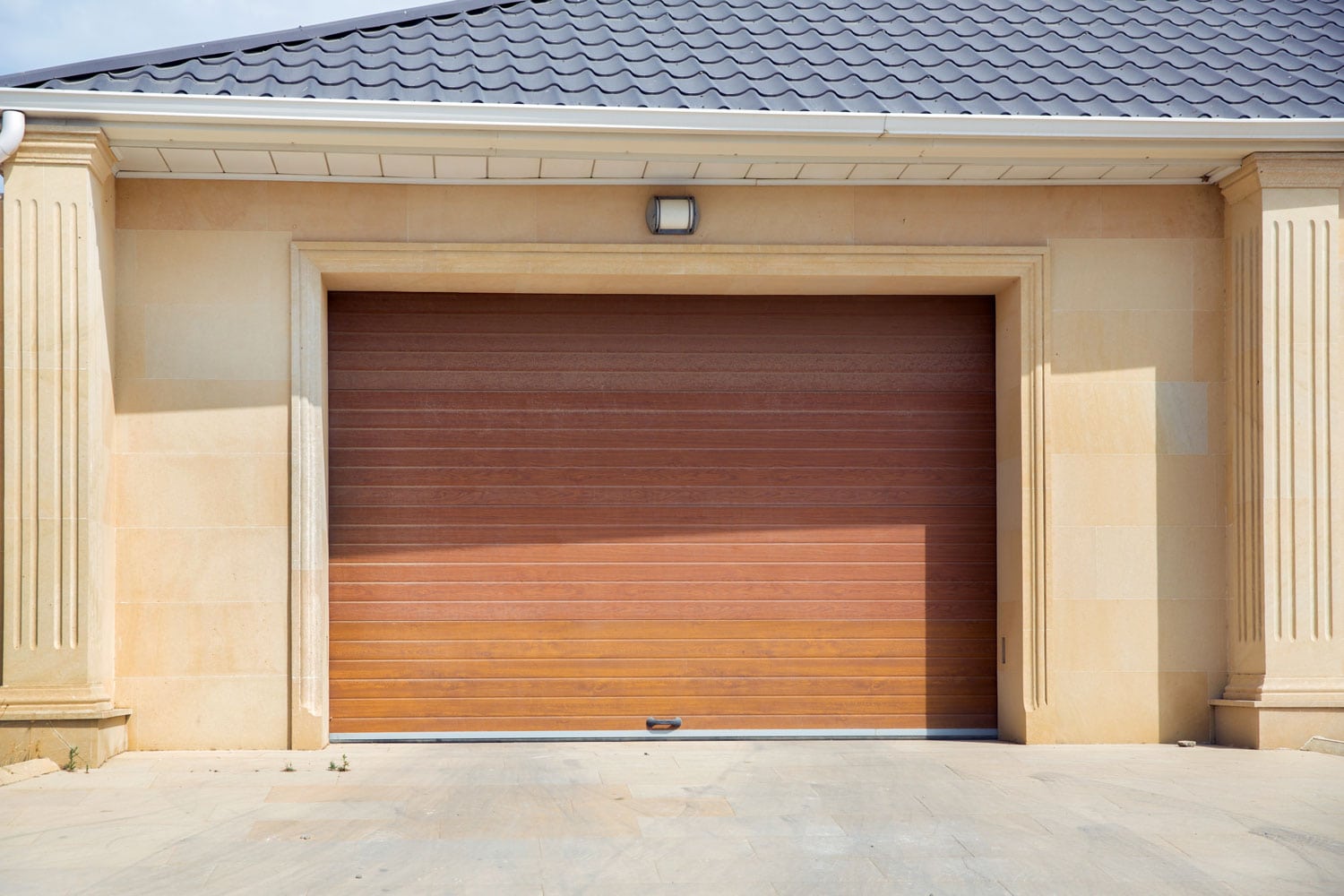
Insulating a wooden garage door can be a DIY-friendly job. Property owners only need to use foam boards and install these materials onto the door’s panels to increase its thermal resistance properties.
Other options are available to increase the garage door’s R-value, although some of these choices may increase expenses.




